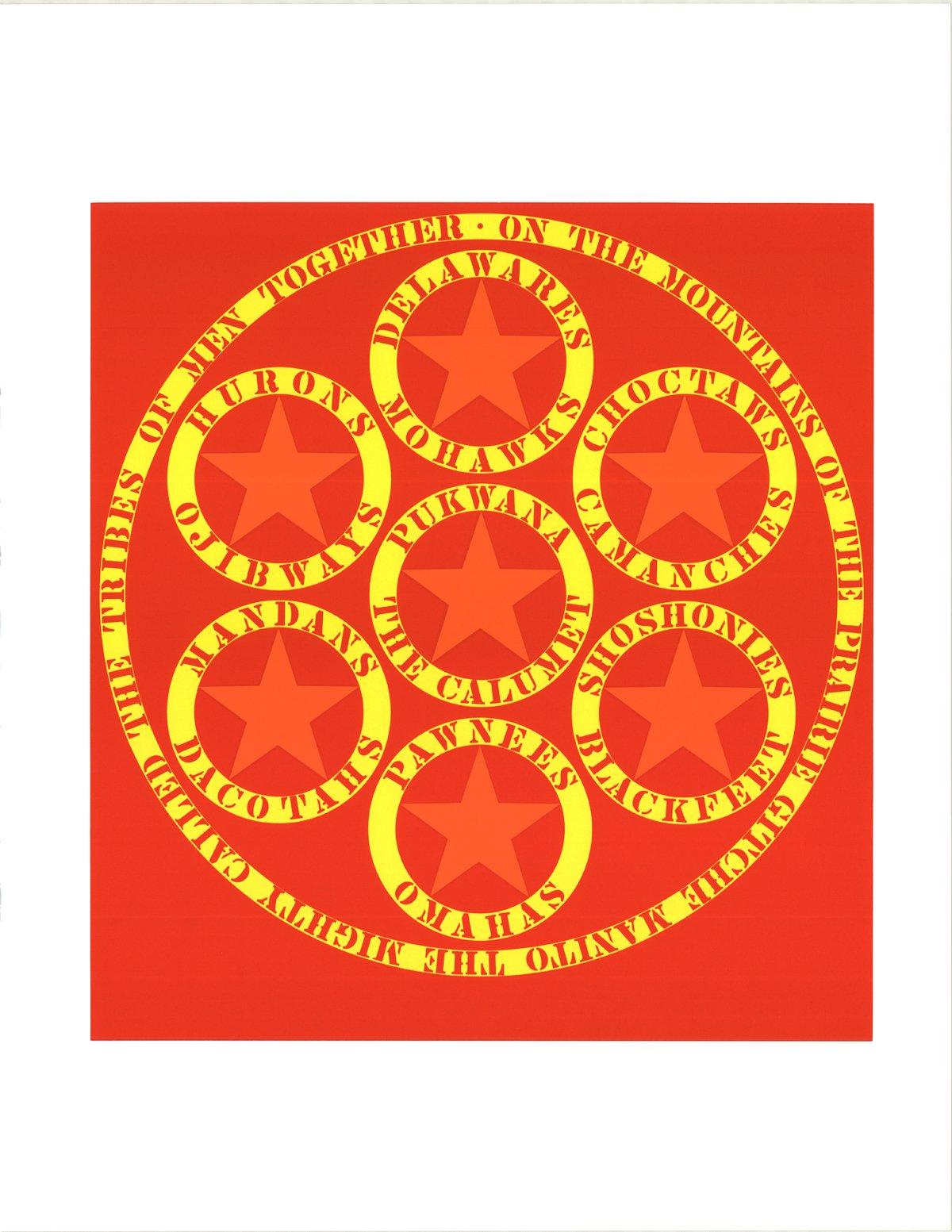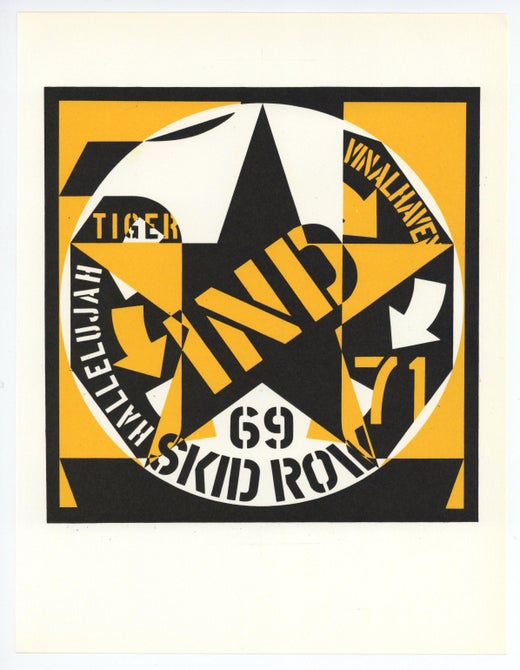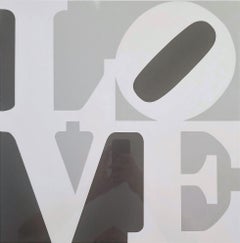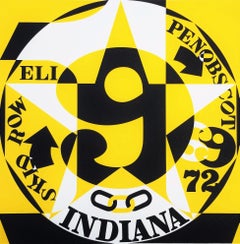Artist: Robert Indiana (American, 1928-2018)
Title: "The Calumet"
Portfolio: The American Dream
*Issued unsigned
Year: 1997
Medium: Original Screenprint on Coventry paper
Limited edition: 395, (there were also 30 artist's proofs)
Printer: Marco Fine Arts Contemporary Atelier, El Segundo, CA
Publisher: Marco Fine Arts Contemporary Atelier, El Segundo, CA
Sheet size: 22" x 16.75"
Image size: 15.07" x 14"
Condition: In excellent condition
Notes:
Provenance: private collection - Düsseldorf, Germany. Comes from Indiana's 1997 "The American Dream" book portfolio of thirty screenprints. Printed in three colors. Text on verso of the following work as issued.
Robert Indiana's 1997 black leather-covered book portfolio "The American Dream" was printed and published with 30 screenprints: 6 loose each signed and numbered and 24 bound not signed and numbered, as issued. Forward by Susan Ryan, text by Michael McKenzie and poems by Robert Creeley. The book was issued within a white cardboard packing box with red and black lettering.
This image is based of Indiana's 1971 screenprint edition "The Calumet", (Sheehan No. 64, page 43), from his 1971 "Decade" series, (Sheehan No. 63-72, page 42-44). The prints in that portfolio reproduce one of Indiana's paintings from each year of the 1960's. The bear they same titles as the corresponding paintings. "The Calumet" is a 1961, 90" x 84", oil on canvas painting which is within the permanent collection of the Rose Art Museum, Brandeis University, Waltham, MA.
"The Calumet", derived from Longfellow's "Song of Hiawatha", reflects Indiana's ongoing involvement with American literary associations and sources. As interpreted, by Indiana, the schematized image of the red clay peace-pipe smoked by the Indians in Longfellow's poem symbolizes mankind's potential to eradicate war. - (Sheehan page 9). Seven stars for seven spheres, revolving like ball bearings in a universe of imagined planets intertwined by an artist's imagination. This is American Indian Indiana style, a geometry more perfect than a Choctaw blanket. Like many Indiana paintings, this work has a poetic reference - the outer rim is a line from the poem "Hiawatha" by Henry Wadsworth Longfellow.
Biography:
Robert Indiana was born on September 13, 1928 named Robert Clark in New Castle, Indiana, and was adopted as an infant by Earl Clark and Carmen Watters. After his parents divorced, he relocated to Indianapolis to live with his father so he could attend Arsenal Technical High School (1942–1946), from which he graduated as valedictorian of his class. After serving for three years in the United States Army Air Forces, Indiana studied at the Art Institute of Chicago (1949–1953), the Skowhegan School of Painting and Sculpture in Maine (summer 1953) and Edinburgh University and Edinburgh College of Art (1953–1954). He returned to the United States in 1954 and settled in New York City. In New York, Indiana's lover Ellsworth Kelly, whom he met in 1956, helped him find a loft on Coenties Slip. On Coenties Slip he met neighboring artists like Jack Youngerman, Agnes Martin and Cy Twombly, with whom he shared his studio for a time. Indiana's career took off in the early 1960s after Alfred H. Barr, Jr., bought The American Dream, 1 for the Museum of Modern Art.
In 1964, Indiana moved from Coenties Slip to a five-story building at Spring Street and the Bowery. In 1969, he began renting the upstairs of the mansarded Victorian-style Odd Fellows Hall named "The Star of Hope" in the island town of Vinalhaven, Maine, as a seasonal studio from the photographer Eliot Elisofon. Half a century earlier, Marsden Hartley had made his escape to the same island. When Elisofon died in 1973, Indiana bought the lodge for $10,000 from his estate. He moved in full-time when he lost his lease on the Bowery in 1978. Indiana grew reclusive in his final years. He died on May 19, 2018, at his home in Vinalhaven, Maine, of respiratory failure at the age of 89. One day before his death, a lawsuit was filed over claims that his caretaker had isolated him from family and friends, and was marketing unauthorized reproductions of his works.






